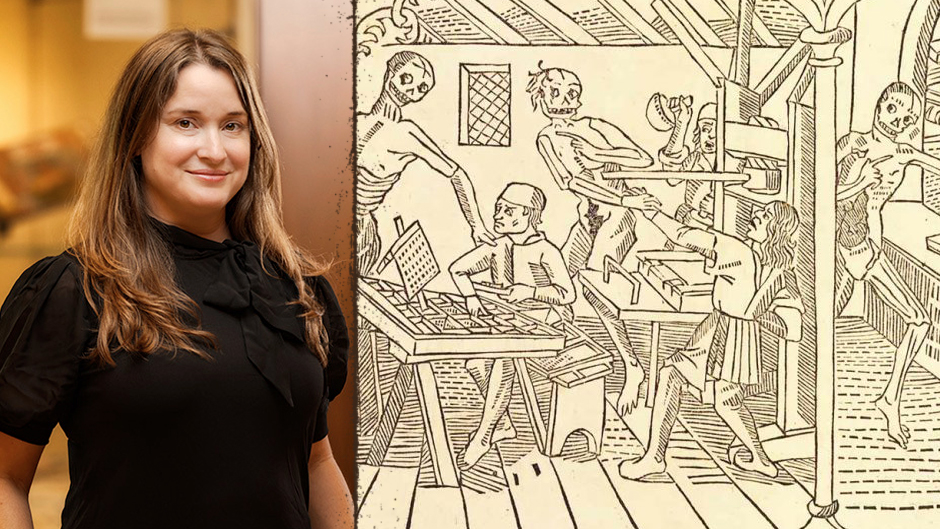From woodblock printing, the most ancient form of reproducible printing, to the repetitive use of dots in half-toning, Robin Potter Nolasco explored and explained a variety of illustrating processes that have evolved in past centuries as part of her virtual presentation on Thursday.
“Art for the People: A History of Illustration” launched the new series of “Deep Dive” virtual presentations that highlight University of Miami Libraries Special Collections. This area, which retains many of the examples referenced in the online seminar, offers the tactile experience of handling a wide range of rare artifacts to the general public, as well as the University community.
While many people think of illustrated books as being primarily for children, Nolasco, Special Collections librarian, pointed out that the use of illustrations is far more universal and predates written language.
“Placing pictures alongside text goes back to the very beginnings of not only printed books but also illuminated manuscripts. They all went hand in hand, so it’s a really interesting history,” noted Nolasco.
The librarian highlighted that her presentation included illustrations that she found personally inspiring and that represent a diversity of cultures and themes. To support her title, she intentionally chose illustrations that common people of the different eras might be able to access.
“In contrast to a painting or work of art, which maybe you would see in a church, these types of illustrations, sometimes printed on pamphlets or cheap paper, were a bit more accessible to at least the middle class, if not everyone,” she explained.
Nolasco detailed three printing processes: woodblock printing, “intaglio”—Italian for “carving” or “engraving”—and lithography.
Woodblocking, she noted, went hand in hand with the movable-type technique invented by Johannes Gutenberg in the mid-15th century that launched the print revolution.
For the process, negative space is carved away and ink rolled onto raised surface. The print is often smudgy because the ink is simply raised and mushed onto the paper through the press.
She distinguished the wood-blocking process from intaglio, which actually encompasses six different techniques. For the “engraving” technique, a tool called a burin is used to carve grooves into a copper plate. Ink is then dispensed into the grooves and then wiped away. The craftsperson must often press harder to force the ink out of the grooves. The process, which allows only for black and white, was used most often in books through the 1700s and 1800s.
For her third printmaking process, she focused on the lithograph, which was developed in Germany where limestone—essential to the technique—is plentiful. The finished print from this procedure, which became commercially popular in 1820, closely resembles a drawing or painting.
The method functions similarly to the notion that oil and water do not mix. Printmakers draw on a flat piece of limestone with wax or pencil, then get the ink to stick to wax.
Nolasco emphasized that the “Deep Dive” webinars intend to encourage visitors to Special Collections, where they can hold these rare materials in their hands and experience them in real time.

